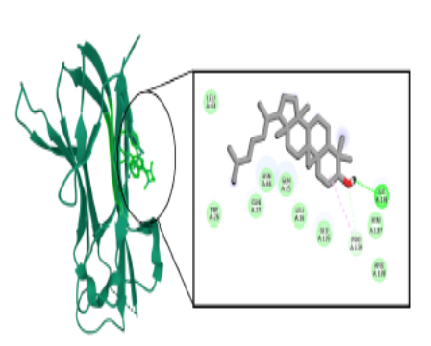


Indian Journal of Science and Technology
DOI: 10.17485/IJST/v16i46.1839
Year: 2023, Volume: 16, Issue: 46, Pages: 4339-4348
Original Article
J Bhuvaneshwari1, B Chitra2, S Vidya3, P Thirumalai Vasan4*
1Research Scholar, Department of Biotechnology, Srimad Andavan Arts and Science College, (Autonomous), (Affiliated to Bharathidasan University, Tiruchirappalli), Thiruvanaikovil, Tiruchirapalli, Tamil Nadu, India
2Head and Assistant professor, Department of Biotechnology, Srimad Andavan Arts and Science College, (Autonomous), (Affiliated to Bharathidasan University, Tiruchirappalli), Thiruvanaikovil, Tiruchirapalli, Tamil Nadu, India
3Associate Professor, Department of Microbiology and Immunology, Faculty of Biomedical Science, Kampala International University, Uganda, Africa
4Assistant Professor, Department of Food Science and Nutrition, American College, (Autonomous), Madurai, Tamil Nadu, India
*Corresponding Author
Email: [email protected]
Received Date:02 August 2023, Accepted Date:30 October 2023, Published Date:13 December 2023
Objectives : To validate the pharmacokinetic effects of the bioactive constituents present in green marine algae Valoniopsis pachynema for treating Psoriasis by in silco methods. Methods: The green marine macroalga was collected from the coastal areas of Ramanathapuram, Tamil Nadu and it was confirmed as Valoniopsis pachynema by the CSIR- Central Marine Algal Research Station, Ramanathapuram. The GC-MS analysis of the algal extract revealed the presence of 7 different functional compounds and these ligands molecules were used for molecular docking studies with TNF-α, which is majorly involved in causing Psoriasis. The ADME Predictions of 7 compounds were computed by SwissADME and PreADMET tools. The physico-chemical properties and drug-likeness predictions of the compounds 1–7 were analysed by Molinspiration. The Molecular Docking scores and the residual amino acid interactions of 7 compounds against crystal structure of TNF-α (2AZ5) binding domain were analysed by Autodock Vina. Findings : The potential functional compounds present in the algal extract were found to be Cycloartenol (CAL), Eicosane (ESN), Phytol (PTL), Cis-13 Eicosenoic acid (CEA), Octadecanoic acid (ODA), Squalene (SQL) and Neophytadiene (NPN). The pharmacokinetic properties and docking studies of all 7 different ligands revealed Cycloartenol as the effective ligand having inhibitor constant 3.05µM and binding energy of -7.52 kcal/mol against TNF-α and it was found to interact with the amino acids ILE 136 and PRO 139 present in the active site domain of the protein. According to the in silico studies, the active component (Cycloartenol (CAL) in Valoniopsis pachynema reduces the amount of tumour necrosis factor which is produced in chronic skin inflammation. Thus, the seaweed metabolites were found to be the promising candidates as TNF-inhibitors for the treatment of Psoriasis. Novelty: The pharmacological effect of the bioactive compounds present in marine macroalgae V. pachynema against skin inflammatory illnesses, particularly Psoriasis, has not been investigated yet.
Keywords: Psoriasis, Chronic skin inflammation, In silico, Valoniopsis pachynema, Bioactive constituents, TNF α
© 2023 Bhuvaneshwari et al. This is an open-access article distributed under the terms of the Creative Commons Attribution License, which permits unrestricted use, distribution, and reproduction in any medium, provided the original author and source are credited. Published By Indian Society for Education and Environment (iSee)
Subscribe now for latest articles and news.